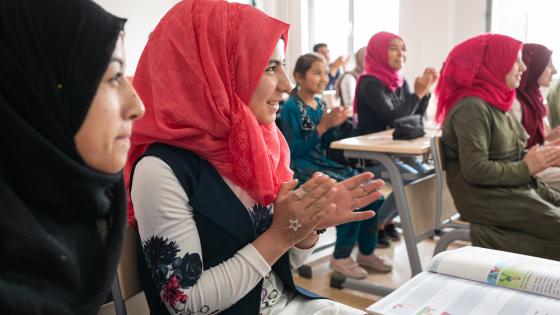Social interactions, whether regular or occasional, influence individual decisions and behaviours. Although economists might be latecomers to the topic of social networks, their interest in the subject has been high. Several surveys summarise the effects of social networks on economic activity (e.g. Jackson 2008, Jackson and Zenou 2014). In the labour market, in particular, it is now well documented that social networks play an important role in transmitting information about jobs (Topa 2011). In particular, Granovetter (1973, 1983) shows that weak ties are superior to strong ties in terms of providing support for getting a job. Indeed, in a close network where everyone knows each other, information is shared and thus potential sources of information are quickly shaken down, whereby the network quickly becomes redundant in terms of access to new information. In contrast, Granovetter stresses the strength of weak ties involving a secondary ring of acquaintances who have contacts with networks outside the ego’s network and, therefore, offer new sources of information about job opportunities.
Social networks are also widely recognised to be very influential in the migration decision (e.g. Munshi 2003). Nonetheless, little is known about the underlying mechanisms. Are weak ties as relevant as in the case of job search? Who matters more for my migration decision, my close friends or my acquaintances, and why? To answer these questions, we investigate in great depth the role of networks in the rural-urban migration decision in China by disentangling the effect of strong and weak ties.
Context
Given the significance of internal migration as well as the importance of networks, China offers an intriguing case study. Indeed, China is currently experiencing one of the largest movements of labour in history. The mass migration from rural to urban areas was triggered by the economic reforms that started at the end of the 1970s. Recent estimates show that over 160 million migrant workers have moved from their rural residence to urban areas (NBS China, 2013). At the same time the guanxi – social connections – permeate many aspects of the Chinese culture and are frequently used to achieve the most disparate tasks in daily life, ranging from getting a job to providing favours.
Model
We present a model in which individuals belong to different dyads: Two individuals in the same dyad hold a strong tie to each other. However, each member can meet other individuals outside the dyad partnership, which we refer to as weak ties, or random encounters.
Our model postulates that the probability of migration increases through social interactions with strong ties, social interactions with weak ties, and the job-arrival rate, while it decreases with the job-destruction rate in the city (which in the context of China corresponds to the emigration rate, i.e. returning to the home village).
Data and empirical framework
We test our theoretical predictions using a unique longitudinal dataset, the Rural-to-Urban Migration in China (RUMiC), in which we can observe individuals’ networks before the migration decision.
- First, we define strong ties based on the closest family contact (a friend, a neighbour or a relative who is not the household member). We also know several characteristics of the strong tie, in particular whether he/she has already migrated to the city.
- Second, we proxy weak ties with the village of residence of the individual, for which we know the share of individuals who migrated to the city.
- Third, since the network is measured at a point in time that precedes migration by 1 or 2 years, we can estimate the impact of the migration of both strong and weak ties on the individual’s subsequent migration decision.
How can close contacts that moved to the city help? As shown in Figure 1, strong ties that migrated are substantially more likely to provide financial help in the previous 12 months than strong ties who did not migrate. Support with e.g. money and housing is hence a likely channel through which strong ties provide concrete help in the migration decision. On the other hand, weak ties that migrated usually provide information about jobs at the destination.
Figure 1. Strong ties - Type of help

Findings
Results from our analysis indicate that both weak and strong ties matter in the migration decision, although the impact of weak ties appears relatively stronger than that of strong ties.
Importantly, we find that weak and strong ties act as complements in the migration decision.
We show that if 50% of someone’s weak ties have migrated, then his/her probability of migrating increases by 155% if his/her strong tie has migrated compared to the case in which the strong tie has not migrated. This indicates that the interactive effect between weak and strong ties is particularly strong above a certain threshold of the fraction of migrants in the village, as shown in Figure 2. In other words, in the migration decision, the information about jobs coming from weak ties becomes particularly effective when paired with the concrete help provided by the strong tie.
More generally, our research shows that, in order to fully understand the extent of the impact of social interactions and social networks on migration decisions, one needs to take into account the behaviour of both strong and weak ties, and the potential complementarities between them.
Previous studies which focused on the role of weak ties only would hence underestimate the full impact of social networks in the migration decision.
Figure 2. Predicted probabilities – Interaction between weak and strong ties

References
Granovetter, M S (1973), “The strength of weak ties”, American Journal of Sociology 78, 1360-1380.
Granovetter, M S (1983), “The strength of weak ties: A network theory revisited”, Sociological Theory 1, 201-233.
Jackson, M O (2008), Social and Economic Networks, Princeton: Princeton University Press.
Jackson, M O and Y Zenou (2014), “Games on networks”, In: P Young and S Zamir (Eds.), Handbook of Game Theory, Vol. 4, Amsterdam: Elsevier Publisher, pp. 91-157.
Munshi, K (2003), “Identification of network effects: Mexican migrants in the US Labor market,” Quarterly Journal of Economics 118, 549-597.
NBS China (2013), “China Statistical Yearbook 2010,” National Bureau of Statistics of China, China Statistics Press.
Topa, G (2011), “Labor markets and referrals,” In: J. Benhabib, A Bisin and M O Jackson (Eds.), Handbook of Social Economics, Vol. 1B, Amsterdam: Elsevier Science, pp. 1193-1221.







